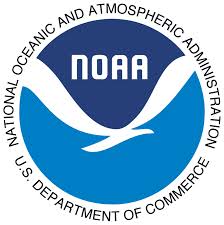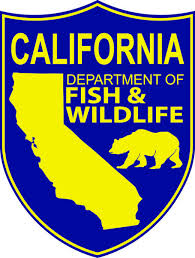Scientific Collecting Permits
- Title 14 § 650 / Fish & Game Code § 1002
SCPs allow take for…
Science
Basic research, or applied research, the results of which achieve either, or both of the following:
- Contribute to the knowledge of wildlife biology, and/or related biological, ecological, or environmental fields;
- Provide research and/or management data important or necessary to promote the protection, conservation, or management of natural resources of this State.
Education
Formal academic instruction, informal interpretive programs, cultural or ceremonial activities, or other educational programs which includes, but is not limited to:
- Instruction on the conservation, biology, or ecology of the State's natural resources
- Interpretation of the State's natural history, including its wildlife, and their communities;
- Training in methods or techniques that result in the take and/or possession of wildlife in the field or laboratory;
- Other activities that are part of a college level course in wildlife biology, fisheries biology, or general biology and ecology.
Propagation
Captive breeding, captive rearing, and other activities that help sustain or increase wildlife populations for scientific, conservation, management, or educational purposes such as:
- Captive breeding, captive rearing, and other actions that may not involve captivity to promote successful reproduction as part of a department- approved recovery or conservation concern, or for scientific research purposes;
- Possessing wildlife in captivity for scientific research or monitoring, or to gain knowledge of techniques for reproduction, or for use in educational programs
- Removal of non-native, invasive, or detrimental wildlife to improve or restore ecosystem or habitat conditions, or otherwise enhance the sustainability of native wildlife or other species
- Management responses necessary to prevent catastrophic wildlife population losses from drought, mudslides, wildfires, disease outbreaks, and other natural or man-made disasters, or to capture, temporarily possess, and relocate wildlife to avoid harm or mortality in connection with otherwise lawful activities.
Which species can I take with an SCP?
Animals that are not listed as Endangered, Threatened, or Candidate under the California Endangered Species Act.
* May include federally listed species
SCP Fee Schedule
 *All fees processes through:
*All fees processes through:
CDFW License & Revenue Branch (LRB)
1740 N. Market Blvd.,
Sacramento, CA 95834
(916) 928-5849For Information on Scientific Collecting Permit Fees please contact the CDFW License and Revenue Branch or visit the Scientific Collecting Permits webpage
Applying for an SCP
On May 1, 2018, the Office of Administrative Law (OAL) approved the regulatory changes affecting Scientific Collecting Permits (SCPs)(OAL regulatory file 2018-0320-05S). The regulatory changes and the Scientific Collecting Permit Portal (SCPP) became effective October 1, 2018. SCP applications are filled out in the in the SCPP.
*SCP application should be submitted 100 days prior to the requested start date*
Before you apply...
Create an SCPP login ID
To gain access to the SCPP follow the instructions (PDF) to create an SCPP login ID
Once you have an SCPP login ID, create a profile within the SCPP
- Before creating a profile you will need to understand the role of each individual in the SCPP (See SCPP Roles below)
- Each individual that will be named on the permit will need their own login ID and profile.
- Please do not create login IDs and profiles for other users.
- Detailed instructions for creating a profile can be found in the SCPP*
Determine which type of SCP you will need
- Use the SCP Pre-Application Guide (PDF) in the SCPP to determine they type and number of permits you will need.
- Review the General Use Authorizations prior to applying. These are predetermined standardized authorizations. If your work will be outside of the scope of these authorizations you will not be issued a General Use permit and will need to apply for a Specific Use Permit. The General Use Authorizations (PDF) can be also be viewed prior to gaining access to the SCPP.
SCPP Roles
Individual & Entity Permitholder Types
* Every User will need to create their own Login ID and their own Profile using an email address they prefer to use in the long term. The User's Login ID and Profile are tied to the email address used to create them, therefore no User should create a Login ID or Profile for anyone else.
User = any individual who will access the SCPP, and/or request to be named on a pemit (i.e., Executive Signatory, Entity Administrators, Principal Investigators, and Authorized Individuals)
Login ID = grants a User access to the SCPP (requires email address, identity verification, and password creation)
Profile = stores a User's personal data for permit applications (i.e., address, phone number, affiliation, and qualifications information)
Individual Permitholder
| Role |
Attributes |
| Individual = PI |
- User is the Permitholder & Principal Investigator (PI; owns the permit)
- Has edit rights to the application(s)
|
| Authorized Individuals (AIs) |
- Can work independently in the field
- Must be named in the application, and thus the permit
- Does not have edit rights to the application(s)
|
| Field Assistants |
- Can only work under direct supervision of the PI or an AI
- Does not need to be named on the permit
- Does not have edit rights to the application(s)
|
Entity Permitholder
| Role |
Attributes |
| Entity |
- Organization, Institution, Agency, Native American tribe, or other
|
| Executive Signatory* |
User who creates the entity profile (cannot be changed)
- Has authority to act on behalf of the entity
- Has a stable long term postion with the entity
- Designates Entity Administrator(s) and PI within the SCPP
- Has edit right to the entity's application(s)
|
| Entity Administrator** |
User is assigned by Executive Signatory
- Can apply for entity permits for the entity (has edit rights)
- More than one Entity Administrator can be assigned for the entity
|
| PI |
User is assigned by Executive Signatory or Entity Administrator
- Oversees activities in the field
- Does not have edit rights to the entity's application(s)
|
| AIs |
- Can work independently in the field
- Must be named in the application, and thus the permit
- Does not have edit rights to the entity's application(s)
|
| Field Assistants |
- Can only work under direct supervision of the PI or an AI
- Does not need to be named on the permit
- Does not have edit rights to the entity's application(s)
|
* The Executive Signatory may also be the PI.
** Executive Signatory assigns Entity Administrators from within the SCPP when creating the entity's profile. An Entity Administrator can also be assigned as the PI.
SCP Contact Information
Daniel Rinkenberg
Fisheries Branch
Daniel.Rinkenberg@Wildlife.ca.gov
California Endangered Species Act (CESA) MOUs
- Fish & Game Code § 2081(a)
CESA MOUs allow take for...
Purpose
→
Science
Education
Management
- by individuals, public agencies, universities, zoological gardens, & scientific or educational institutions
Which species can I take with a CESA MOU?
Animals listed as Endangered, Threatened, or Candidate under the California Endangered Species Act
* Refer to the Endangered and Threatened Animals List and the Special Animals List for CESA and other listing status
Requesting a CESA MOU
Use the contact information below to request a CESA MOU. A template of the necessary information needed to complete the MOU and the appropriate Department contact will be provided upon request.
CESA MOU Contact Information
* Additional information on CESA can be found on the CDFW California Endangered Species Act (CESA) web page.
California Fully Protected Species (FPS) MOUs
FPS MOUs allow take for...
Purpose
→
Scientific Research
→
including efforts to recover fully protected, threatened or endangered species
*Activities outside this purpose cannot be permitted*
Which species can I take with a FPS MOU?
| Animals listed as fully protected under Fish and Game Code § 5515(b) |
| Colorado River Pikeminnow |
Thicktail Chub1 |
Mohave Chub |
Lost River Sucker |
Modoc Sucker |
| Shortnose Sucker |
Humpback Sucker |
Owens Pupfish |
Unarmored Threespine Stickleback |
Rough Sculpin |
1Presumed to be extirpated
FPS MOU Public Information Notice (PIN)
* Required prior to authorization of any Fully Protected Species MOU
Requesting a FPS MOU
Use the contact information below to request a FPS MOU. A template of the necessary information needed to complete the MOU will be provided upon request.
FPS MOU Contact Information
FBCESAPermits@wildlife.ca.gov
* Additional information on Fully Protected Species can be found on the CDFW Fully Protected Animals web page.


Cooperative Program between NMFS and CDFW
(Results in an annual federal authorization administered through a state program)
4(d) Authorizations allow take for...
Purpose
→
Scientific Research
→
Threatened species by approval through Final 4(d) Rules in a program that provides limits on take prohibitions in section 9(a)(1) of the ESA
What species can I take with a 4(d) Authorization?
These Federally Threatened species:
- Chinook Salmon
- Coho Salmon
- Steelhead
- Green Sturgeon
Applying for a 4(d) Authorization
Applications can be completed on NOAA's Authorizations and Permits for Protected Species (APPS) website annually. Applications can be drafted prior to submission in APPS, but can only be submitted during the application submission window. Upon approval 4(d) authorizations are valid for one calendar year (January - December).
The application submission window for the 2023 4(d) Program is now closed. The application submission window for the 2024 4(d) Program will be open September 1st, 2023 through September 15th, 2023. Applications will only be able to be submitted while the submission window is open; however, APPS will open August 1st to allow applicants to begin working on their applications for the 2024 4(d) Program season. Applicants are highly encouraged to complete their draft applications prior to the submission window.
4(d) Authorization Contacts
Mr. Lee Scheffler
CDFW Fisheries Branch
Lee.Scheffler@Wildlife.ca.gov
(916) 203-2570
Shivonne Nesbit
NOAA Fisheries West Coast Region
shivonne.nesbit@noaa.gov
(503) 231-6741